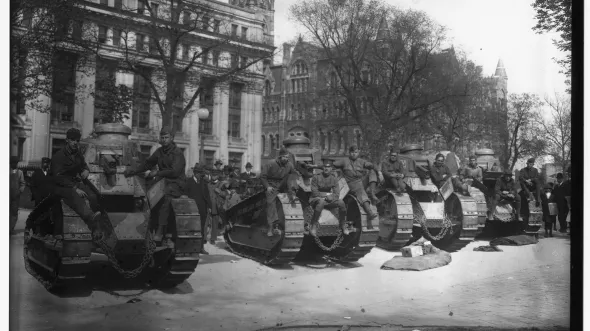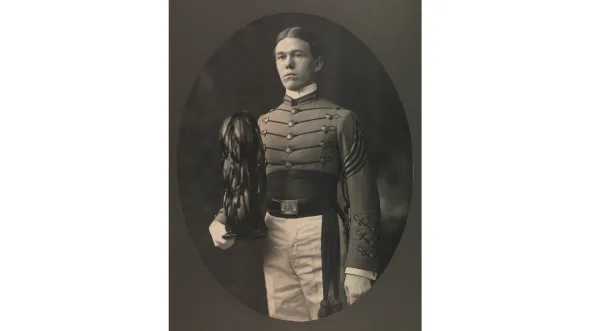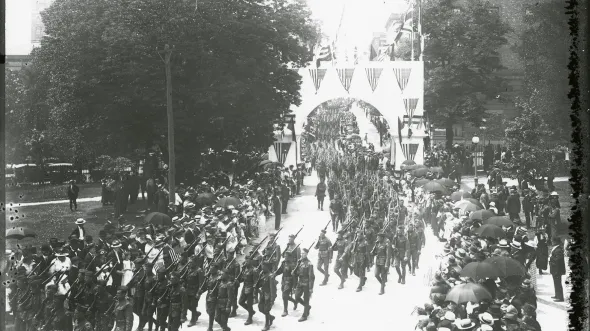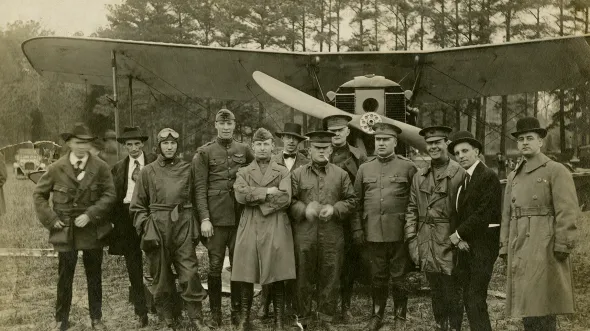In 1917, Virginia-born President Woodrow Wilson brought the nation into war against the German, Austrian, and Ottoman empires.
The Commonwealth and the Great War tells the stories of individual Virginians who carried the state’s proud military tradition to the battlefront during World War I. 100,000 of them served; 3,700 died. Many more were injured. Thirty-nine percent of the draftees in 1918 were African Americans. Hundreds of Virginia nurses and doctors followed soldiers to Europe. Military facilities established in Virginia became essential centers for the war effort. Thousands labored at home to produce vital war supplies, and families tended “Victory Gardens” and rationed food to “make the world safe for democracy.”




